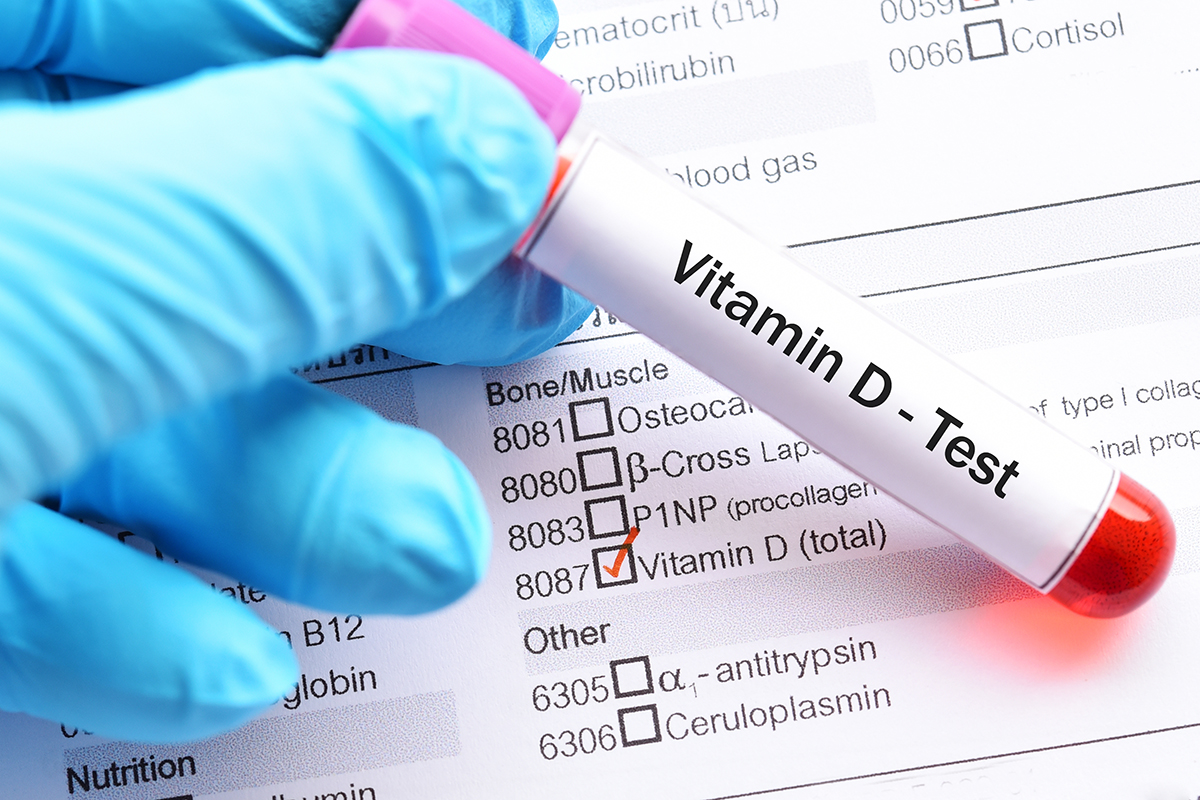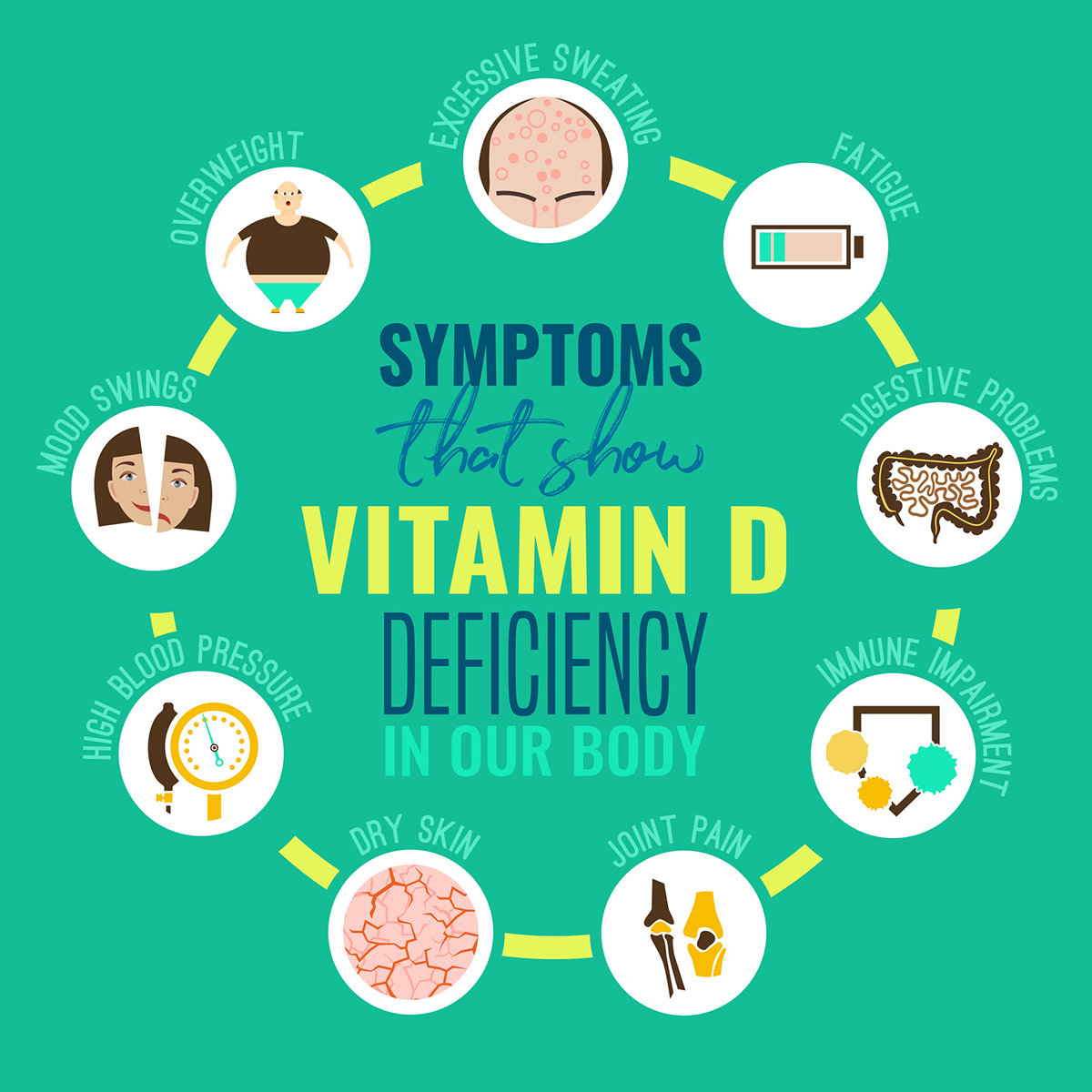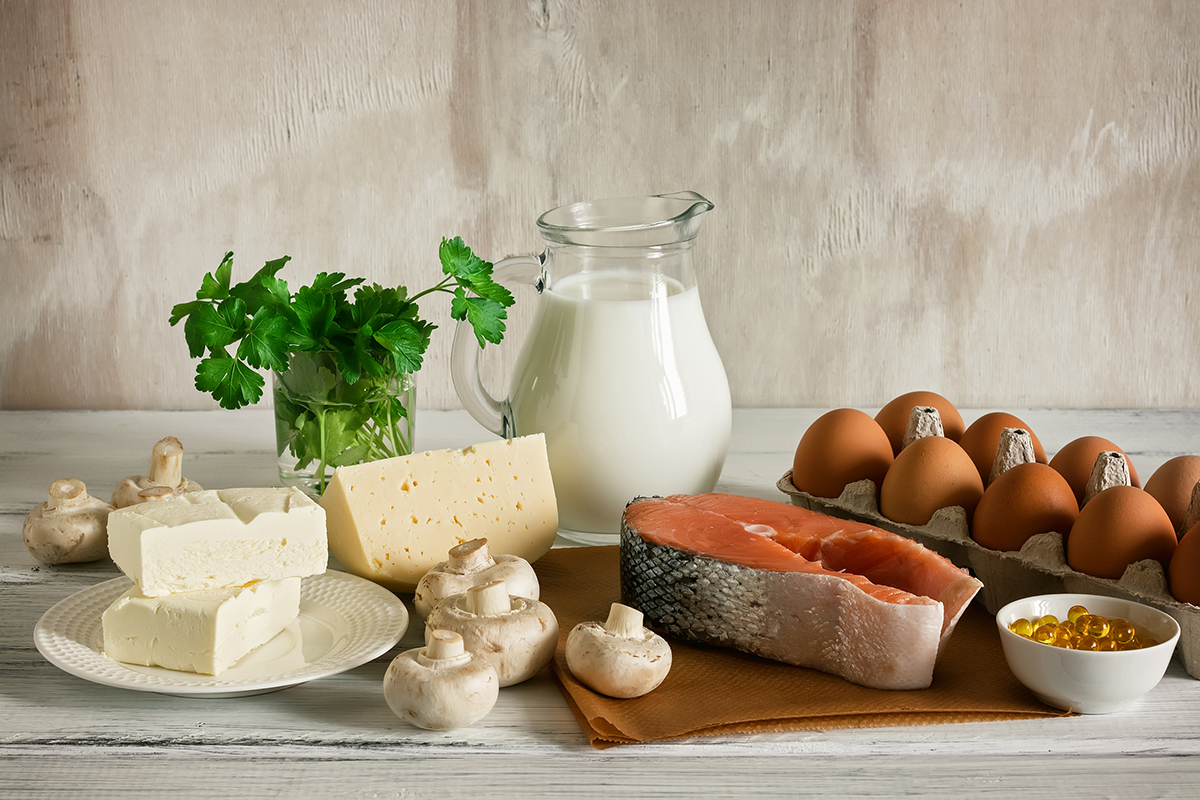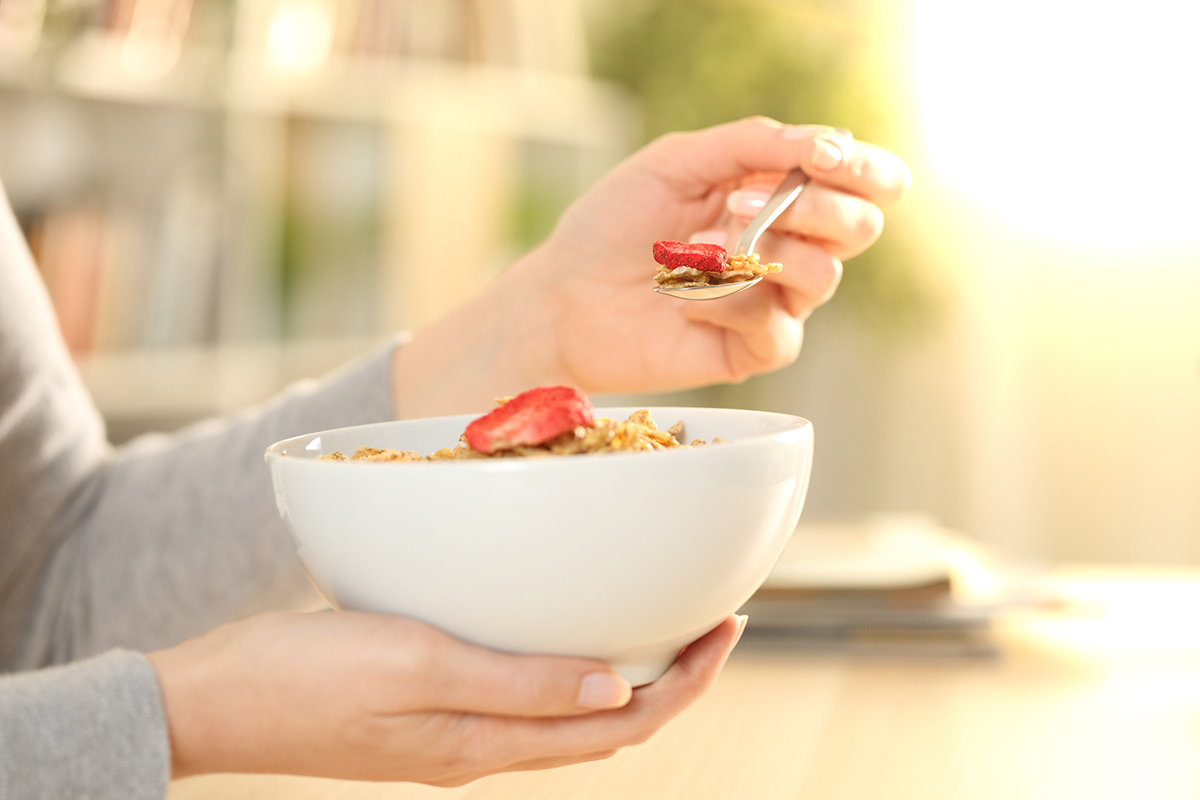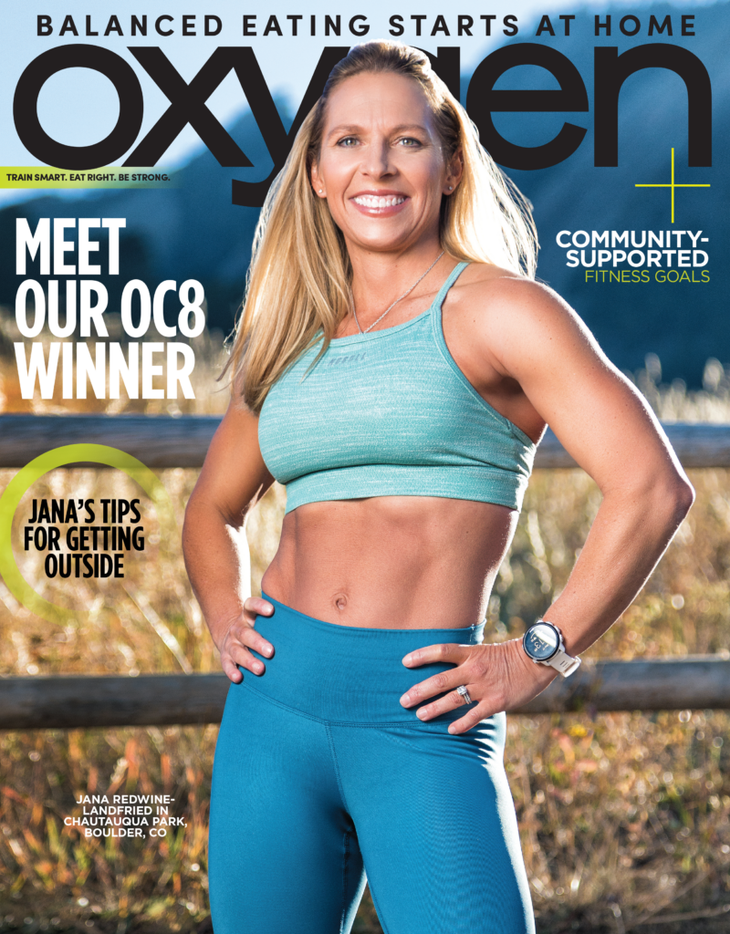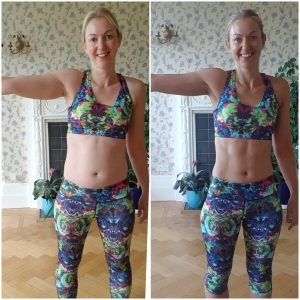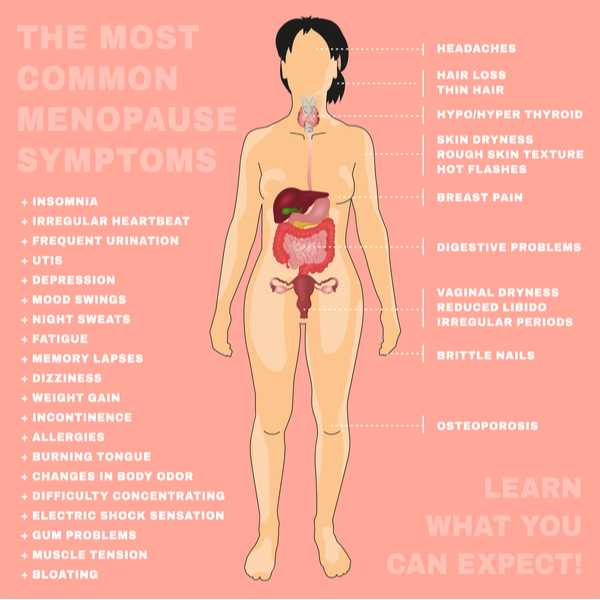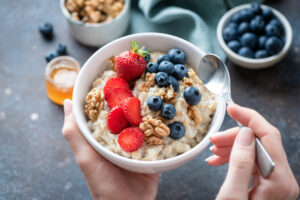Do you get afternoon energy slumps and irresistible donut cravings? These could all be pointing to blood sugar problems. Every cell in your body uses the sugar glucose as fuel, so blood sugar problems –even without diabetes–could be throwing off your hormones and worsening problems like PMS, fertility issues, and acne.
Conventional nutrition guidelines make eating cereals or bagels for breakfast, sandwiches for lunch, and pasta for dinner look healthy. But for most of us with sedentary desk jobs, these meals could result in multiple blood sugar roller coasters throughout the day, even if you’re healthy.
The good news is that incorporating a few practical nutritional strategies will make it much easier to keep your blood sugar stable to support your hormone balance. You’ll also feel a steady mood and energy all day, with minimal cravings.
First, let’s understand what it means to have blood sugar problems and how it affects your hormones. Then, we’ll dive into practical solutions.

What Does It Mean to Have Blood Sugar Problems?
The term “blood sugar” refers to the amount of glucose present in your blood at any given time. The glucose comes from your liver’s carb (glycogen) stores or when the body breaks down carbohydrates, such as starchy and sugary foods.
Whether it’s a slice of cake, toast, or a plate of pasta, the carbohydrates consumed are absorbed into the bloodstream, increasing blood sugar1 .
High blood glucose tells your pancreas to secrete insulin, which then tells your cells to absorb glucose to lower your blood sugar. The problem with carby foods is that they tend to trigger high amounts of insulin to shove away the excess glucose, which could lead to a blood sugar dip a few hours later.
As a result, you might feel symptoms like jitters, shakiness, anxiety, hunger, carb cravings, energy dips, mood swings, fatigue, irritability, and brain fog2.
Blood sugar problems refer to when these blood sugar fluctuations affect your health, well-being, or performance. You don’t necessarily need to be diabetic or prediabetic. In fact, it’s possible to have blood sugar problems with normal blood tests for years or decades before becoming diabetic.
Unstable blood sugar levels affect over 50% of Americans–most of us are unaware and think these symptoms are normal3. But remember, common doesn’t mean healthy. Now, let’s understand how it’s throwing off your hormones.
The Links Between Blood Sugar and Women’s Hormones

Every cell in your body, especially your brain, uses glucose for energy. So, your body could perceive each blood sugar dip as an emergency and release stress hormones like cortisol and adrenaline 4 5.
This stress response puts you in a heightened “fight or flight” state, which makes it harder for your body to be in a “rest, digest, and procreate” state6 . Your ovaries will struggle to produce healthy and balanced levels of hormones if your blood sugar is always in wild swings7.
Your blood sugar problems can also affect your cycles, especially late in the cycle. Hormonal changes throughout your cycle can change your blood sugar responses, and this is different from woman to woman8 .
For instance, in the days leading up to menstruation, some women may experience insulin resistance, making it harder for their cells to respond to insulin, leading to elevated blood sugar levels. Whereas, during the second half of the cycle when progesterone dominates, some women may become more insulin sensitive9.
1) Blood Sugar Problems Make Estrogen Dominance and PMS Worse
Estrogen is your female hormone that makes you happy and insulin-sensitive during the first half of your cycle10. You want to have healthy and juicy levels of estrogen, but not too much. Estrogen dominance, when you have too much estrogen relative to progesterone, can cause problems like PMS, acne, bloating, and more.
High blood sugar can make estrogen dominance worse 11. Both high blood sugar and insulin can also reduce SHBG, a protein that stores hormones in your blood. Lower SHBG releases more estrogen into the bloodstream, potentially worsening some period symptoms such as breast tenderness, fibroids, and heavy menstrual periods.
2) Women with Low Progesterone Fare Worse with Blood Sugar Problems
Similar to estrogen, progesterone is another hormone crucial for blood sugar regulation. Progesterone enhances insulin secretion, resulting in increased insulin release into the bloodstream12. This, in turn, helps reduce blood sugar levels.
Progesterone also supports balanced blood glucose by enhancing glucose uptake in cells, further lowering blood sugar levels.
Progesterone naturally goes down with age, faster than estrogen does, naturally leading to estrogen dominance. Unfortunately, insufficient progesterone levels can worsen insulin resistance and increase blood sugar12 . This can be a double whammy with estrogen dominance.
3) Elevated Testosterone
Although known as men’s hormone, testosterone is a great and crucial hormone for women’s well-being. Healthy testosterone levels provide you with energy, sex drive, and assertiveness, and help you build and maintain muscles13.
However, too much testosterone, such as in women with PCOS, is a problem. Among these women, elevated insulin levels can signal the ovaries to produce more testosterone, leading to issues like facial hair growth and acne14.
4) Blood Sugar Problems Worsens Menopause Symptoms
During menopause, your estrogen nosedives, which can lead to insulin resistance15 . Many women going through perimenopause and menopause feel that their health starts to unravel around this time.
Studies show that insulin resistance and poor blood sugar control is a strong predictor of menopausal symptoms, such as hot flashes and night sweats16. This makes it even more important to take steps to manage blood sugar effectively.
How to Improve Your Blood Sugar Control for Better Hormone Balance

If you have major blood sugar problems along with hormone imbalances, it’s going to be very difficult to re-balance your hormones. To address the root cause, you’re going to have to learn to stabilize your blood sugar.
The good news is that you can take simple steps to regulate your glucose levels without making drastic changes to your diet and lifestyle:
1) Reduce High-Glycemic Impact Food, Focus on Blood Sugar-Friendly Vegetables and Legumes
High glycemic foods, like refined sugars and processed grains, can cause blood sugar spikes followed by rapid drops17. This can cause overeating and excess cortisol production.
Low-glycemic foods, such as legumes and vegetables, release glucose into your bloodstream more slowly, preventing these rapid spikes and crashes. This simple shift can help you maintain steady energy levels throughout the day and support hormonal balance.
You want to make these foods and protein the spotlight of your meals, while treating high-glycemic carbs like pasta, rice, potatoes, or bread more like a condiment.
2) Start Your Day With 30 Grams of Proteins, Good Fats, and Fiber
Begin your day with a hormone-balancing breakfast that includes 30 grams of protein, good fats, and fiber. This combination helps stabilize blood sugar levels throughout the morning, reducing the likelihood of energy slumps and sugar cravings.
Now, if you’re eating eggs for breakfast, you may think you’re eating enough protein. The catch is that each medium-sized egg has 6 grams of protein, so you’ll need 5 eggs to get 30 grams! However, it’s totally okay to eat eggs with sausage or other protein sources. A palm-sized portion of lean meat provides about 30 grams of protein.
A protein-rich breakfast also supports feelings of fullness, helping regulate your appetite throughout the day. Ideally, aim to eat within 1-2 hours of waking, to help keep cortisol levels in check.
3) Soften Your Blood Sugar Responses With Proteins, Healthy Fat, and Fiber
You don’t necessarily have to give up all carbs, but you can pad your blood sugar responses by adding proteins, healthy fat, and fiber.
See also

Proteins are usually very gentle on your blood sugar and could slow down your blood sugar rise from carbohydrate-containing foods. Recent research shows that up to 2.3 grams per pound of body weight (over 5 grams per kilogram) is very safe for people without pre-existing kidney problems18.
4) Exercise, Especially Resistance Training
Movement is another crucial factor for healthy blood sugar balance. As you engage in physical activity, your muscles absorb excess glucose from your bloodstream, making your body more insulin-sensitive. Even 10 minutes of walking after eating is better than going straight back to your seat. This, in turn, helps lower blood sugar levels.
Resistance training and muscle-building exercises, in particular, are essential for blood sugar control and all aspects of health. Muscles are responsible for a staggering 90% of blood sugar balance19 ! Building lean muscle mass can help your body utilize glucose more efficiently, reducing the risk of insulin resistance and promoting overall hormonal balance.
And don’t worry about becoming a hulk. It’s nearly impossible for women to gain so much muscle without taking extra hormones and eating huge amounts of food. Rather, muscles provide a frame that will provide beautiful curves along with numerous disease-prevention and anti-aging benefits.

5) Get a CGM and See How Your Blood Sugar Fluctuates Throughout the Day
Testing is the best way to know if your blood sugar is optimal.
Keep in mind that blood tests at your doctor’s are made to diagnose diseases rather than to see if your health is optimal. If you get these tests with your doctor, refer to the optimal range provided by the Institute of Functional Medicine. They provide optimal ranges that correspond to optimal health and clinical outcomes.
Also, a functional medicine doctor or nutritionist can help you interpret these labs and devise a personalized plan to optimize your blood sugar.
| Marker | Normal | Optimal value |
| HbA1C | Below 5.7%, | 4.6-5.5% |
| Fasting blood glucose | Below 100 mg/dL | 70- 85 mg/dL |
| Insulin | Between 2-20 mIU/mL | 4.6 – 5.5 mcIU/ml |
The latest studies suggest that our blood sugar responses to each food can vary widely. For example, one person might get a high blood sugar increase from eating rice, but the next person could have very little blood sugar fluctuation. This depends largely on their gut bacteria.
Although expensive, continuous glucose monitoring (CGM) can be a helpful tool to better understand your unique blood sugar responses. Most people have blood sugar responses not just to foods but also to stressful situations and exercises. CGM is a wearable technological device that offers immediate insights into any factor affecting your blood sugar.
Wearing a CGM for at least a few weeks can provide a window into how your diet and lifestyle decisions impact your blood sugar levels. This knowledge can empower you to make informed choices for better hormone balance.
6) Try a Blood Sugar Support Supplement Like Blood Sugar Breakthrough
While all the above have the largest effect, several compounds are shown to be helpful for keeping blood sugar in check. These include berberine, cinnamon, chromium, and bitter melon (to name just a few)20 .
Incorporating a blood sugar support supplement like Blood Sugar Breakthrough into your daily routine might help stabilize blood sugar levels and support overall metabolic health. Of course, always consult with a healthcare professional before adding any new supplement to your regimen.
Final Word
Women’s hormones are always in a delicate dance with each other, including insulin and blood sugar. So, if your blood sugar is out of whack, it’s throwing off your hormones. Learning to eat and exercise to stabilize your blood sugar is crucial to your overall well-being and hormone balance.
References:
- Nakrani MN, Wineland RH, Anjum F. Physiology, Glucose Metabolism. StatPearls Publishing; 2023.
- Mathew TK, Zubair M, Tadi P. Blood Glucose Monitoring. StatPearls Publishing; 2023.
- Cdc.gov. Accessed November 10, 2023. https://www.cdc.gov/diabetes/pdfs/data/statistics/national-diabetes-statistics-report.pdf
- Thau L, Gandhi J, Sharma S. Physiology, Cortisol. StatPearls Publishing; 2022.
- Verberne AJM, Korim WS, Sabetghadam A, Llewellyn-Smith IJ. Adrenaline: insights into its metabolic roles in hypoglycaemia and diabetes. Br J Pharmacol. 2016;173(9):1425-1437. doi:10.1111/bph.13458
- Hart EC, Charkoudian N, Miller VM. Sex, hormones and neuroeffector mechanisms: Sex, hormones and neurotransmission. Acta Physiol (Oxf). 2011;203(1):155-165. doi:10.1111/j.1748-1716.2010.02192.x
- Haffner SM, Katz MS, Stern MP, Dunn JF. The relationship of sex hormones to hyperinsulinemia and hyperglycemia. Metabolism. 1988;37(7):683-688. doi:10.1016/0026-0495(88)90091-1
- Pulido JME, Salazar MA. Changes in insulin sensitivity, secretion and glucose effectiveness during menstrual cycle. Arch Med Res. 1999;30(1):19-22. doi:10.1016/s0188-0128(98)00008-6
- Valdes CT, Elkind-Hirsch KE. Intravenous glucose tolerance test-derived insulin sensitivity changes during the menstrual cycle. J Clin Endocrinol Metab. 1991;72(3):642-646. doi:10.1210/jcem-72-3-642
- Alemany M. Estrogens and the regulation of glucose metabolism. World J Diabetes. 2021;12(10):1622-1654. doi:10.4239/wjd.v12.i10.1622
- Mauvais-Jarvis F, Clegg DJ, Hevener AL. The role of estrogens in control of energy balance and glucose homeostasis. Endocr Rev. 2013;34(3):309-338. doi:10.1210/er.2012-1055
- Lee SR, Choi WY, Heo JH, et al. Progesterone increases blood glucose via hepatic progesterone receptor membrane component 1 under limited or impaired action of insulin. Sci Rep. 2020;10(1). doi:10.1038/s41598-020-73330-7
- Davis SR, Wahlin-Jacobsen S. Testosterone in women—the clinical significance. Lancet Diabetes Endocrinol. 2015;3(12):980-992. doi:10.1016/s2213-8587(15)00284-3
- Corbould A. Effects of androgens on insulin action in women: is androgen excess a component of female metabolic syndrome? Diabetes Metab Res Rev. 2008;24(7):520-532. doi:10.1002/dmrr.872
- Mauvais-Jarvis F, Manson JE, Stevenson JC, Fonseca VA. Menopausal hormone therapy and type 2 diabetes prevention: Evidence, mechanisms, and clinical implications. Endocr Rev. 2017;38(3):173-188. doi:10.1210/er.2016-1146
- Thurston RC, El Khoudary SR, Sutton-Tyrrell K, et al. Vasomotor symptoms and insulin resistance in the study of women’s health across the nation. J Clin Endocrinol Metab. 2012;97(10):3487-3494. doi:10.1210/jc.2012-1410
- Ludwig DS, Majzoub JA, Al-Zahrani A, Dallal GE, Blanco I, Roberts SB. High glycemic index foods, overeating, and obesity. Pediatrics. 1999;103(3):e26-e26. doi:10.1542/peds.103.3.e26
- Schoenfeld BJ, Aragon AA. How much protein can the body use in a single meal for muscle-building? Implications for daily protein distribution. J Int Soc Sports Nutr. 2018;15(1). doi:10.1186/s12970-018-0215-1
- DeFronzo RA, Tripathy D. Skeletal muscle insulin resistance is the primary defect in type 2 diabetes. Diabetes Care. 2009;32(suppl_2):S157-S163. doi:10.2337/dc09-s302
- Hekmat-Ardakani A, Morshed-Behbahani B, Rahimi-Ardabili H, Ayati MH, Namazi N. The effects of dietary supplements and natural products targeting glucose levels: an overview. Crit Rev Food Sci Nutr. 2023;63(23):6138-6167. doi:10.1080/10408398.2022.2028716













